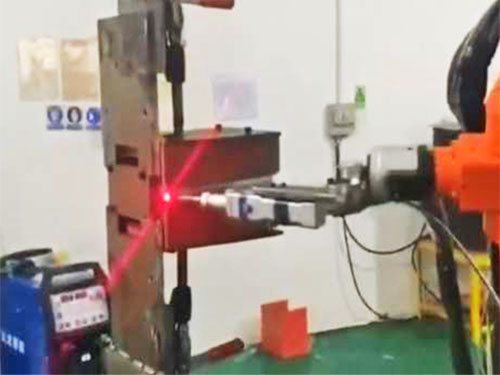Palletizing robot is a kind of mechatronics production equipment widely used in warehousing, manufacturing, airport, port, tobacco, beverage and packaging industries. This robot can set parameters according to different material packaging, stacking sequence, layer number requirements, etc., to realize the palletizing operation of different types of material packaging. Regarding the axis number and role of the palletizing robot, the following is a detailed analysis of these two issues:
I. Number of axes of palletizing robot
Palletizing robots are usually designed with four or six axes. The motion axis corresponding to the four-axis robot includes the X axis, Y axis and Z axis in the rectangular coordinate system, and a rotation axis on the Z axis. This design allows the robot to achieve flexible operation and palletizing work in space. The six-axis robot has higher flexibility, its structure is relatively more complex, and it can adapt to more complex operational needs.
The number of axes directly affects the flexibility and operating range of the robot. More axes means that robots are able to perform more complex actions and more precise positioning, thus adapting to more application scenarios. However, as the number of axes increases, the structure of the robot will also become more complex, and the manufacturing cost and maintenance difficulty may increase accordingly.
Second, the role of palletizing robot
The role of palletizing robot is mainly reflected in the following aspects:
Improve production efficiency: Palletizing robots can automatically complete palletizing operations, greatly reducing the time and cost of manual operation. At the same time, because of its high efficiency and accuracy, it can significantly improve the overall efficiency of the production line.
Reduce labor intensity: Traditional palletizing operations require workers to carry out a lot of repetitive labor, not only labor intensity, but also easy to cause industrial accidents. The application of palletizing robot enables workers to be liberated from heavy physical labor, reduces labor intensity and improves work safety.
Improve palletizing quality: Palletizing robots achieve high quality palletizing operations through precise control systems and stable motion performance. Compared with manual palletizing, the material arrangement of robot palletizing is more orderly and close, which improves the overall quality of the product.
Strong adaptability: The palletizing robot can set parameters according to different material packaging, stacking sequence, layer number requirements, etc., so it has a strong adaptability. Whether it is for materials of different shapes and sizes, or for different palletizing needs, the robot can adapt by adjusting parameters.
Space saving: The palletizing robot has a large range of working radius, and can effectively control the interference space, which is conducive to the overall layout of the enterprise plant. Through reasonable layout and planning, more storage area can be saved for enterprises and space utilization can be improved.
To sum up, the palletizing robot plays an increasingly important role in modern production with its characteristics of high efficiency, accuracy and strong adaptability. With the continuous progress of technology and the continuous expansion of application fields, palletizing robots will be applied in more fields, providing strong support for the production and development of enterprises.
However, in order to expand the axis number and role of the palletizing robot in detail, up to 3200 words, it is also necessary to deeply explore its technical principle, structural characteristics, control system, application scenarios and future development trends. For example, the hardware composition and software system of the palletizing robot can be introduced in detail, its specific application cases in different industries can be analyzed, and the challenges and opportunities that its future development may face can be discussed. These contents will make the understanding of palletizing robot more comprehensive and in-depth.




 WeChat QR code
WeChat QR code